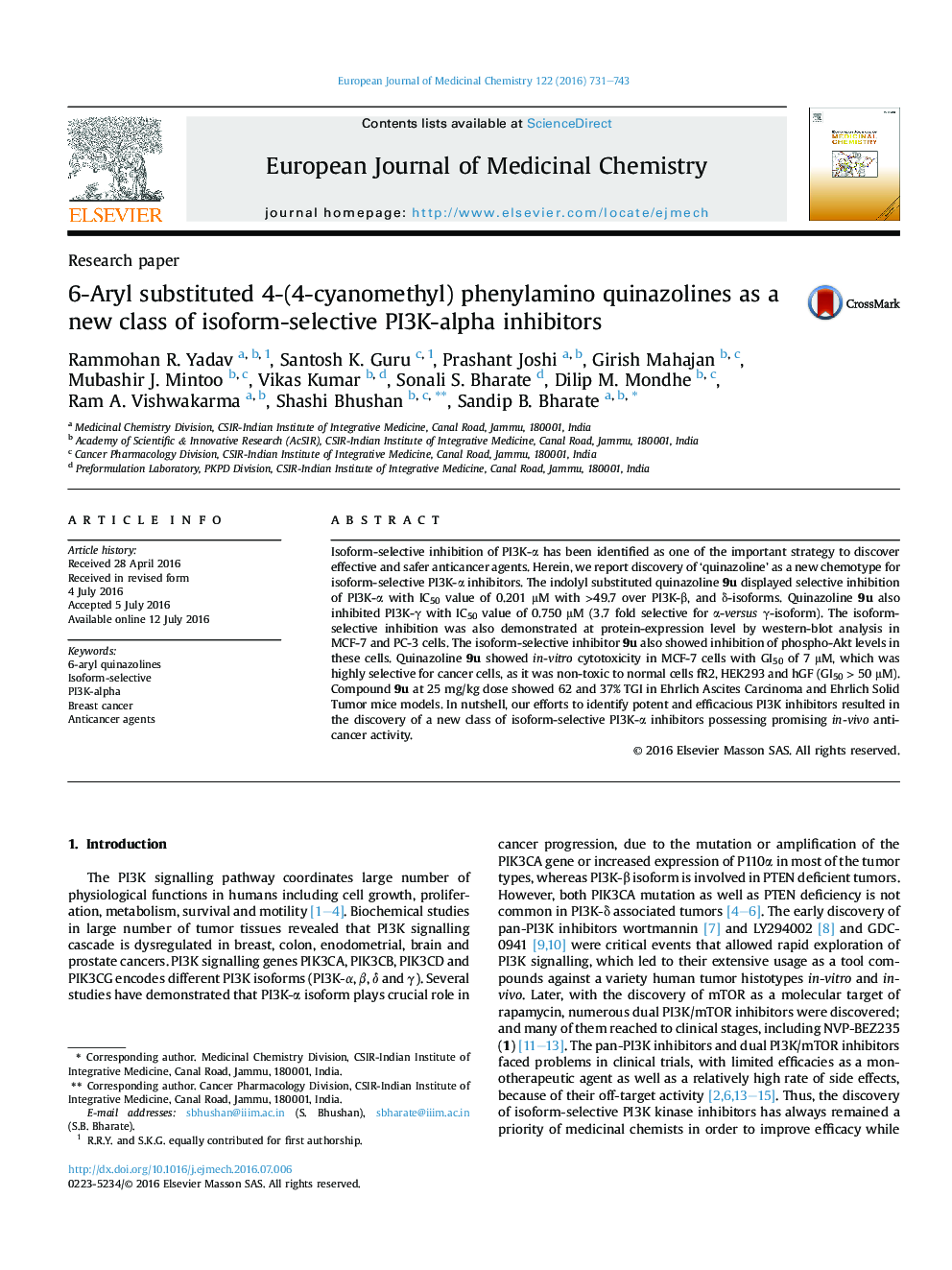| Article ID | Journal | Published Year | Pages | File Type |
|---|---|---|---|---|
| 1394955 | European Journal of Medicinal Chemistry | 2016 | 13 Pages |
•‘Quinazoline’ as a new chemotype for isoform-selective PI3K-α inhibition.•Isoform-selectivity demonstrated at protein-expression level.•Quinazolines 9u and 9x showed promising cytotoxicity in MCF-7 cells.•These were highly selective for cancer cells, and non-toxic to normal cells.•Showed in-vivo activity in murine cancer models.
Isoform-selective inhibition of PI3K-α has been identified as one of the important strategy to discover effective and safer anticancer agents. Herein, we report discovery of ‘quinazoline’ as a new chemotype for isoform-selective PI3K-α inhibitors. The indolyl substituted quinazoline 9u displayed selective inhibition of PI3K-α with IC50 value of 0.201 μM with >49.7 over PI3K-β, and δ-isoforms. Quinazoline 9u also inhibited PI3K-γ with IC50 value of 0.750 μM (3.7 fold selective for α-versus γ-isoform). The isoform-selective inhibition was also demonstrated at protein-expression level by western-blot analysis in MCF-7 and PC-3 cells. The isoform-selective inhibitor 9u also showed inhibition of phospho-Akt levels in these cells. Quinazoline 9u showed in-vitro cytotoxicity in MCF-7 cells with GI50 of 7 μM, which was highly selective for cancer cells, as it was non-toxic to normal cells fR2, HEK293 and hGF (GI50 > 50 μM). Compound 9u at 25 mg/kg dose showed 62 and 37% TGI in Ehrlich Ascites Carcinoma and Ehrlich Solid Tumor mice models. In nutshell, our efforts to identify potent and efficacious PI3K inhibitors resulted in the discovery of a new class of isoform-selective PI3K-α inhibitors possessing promising in-vivo anticancer activity.
Graphical abstractFigure optionsDownload full-size imageDownload as PowerPoint slide
